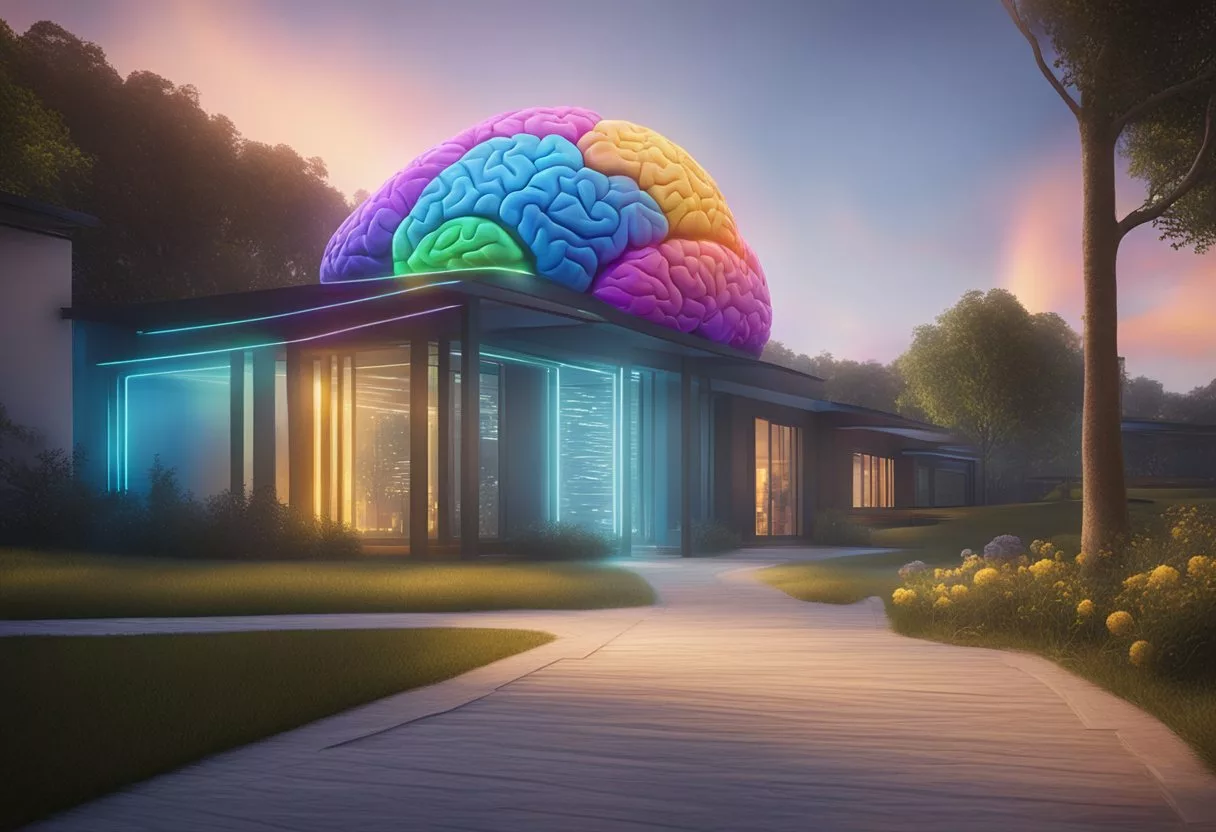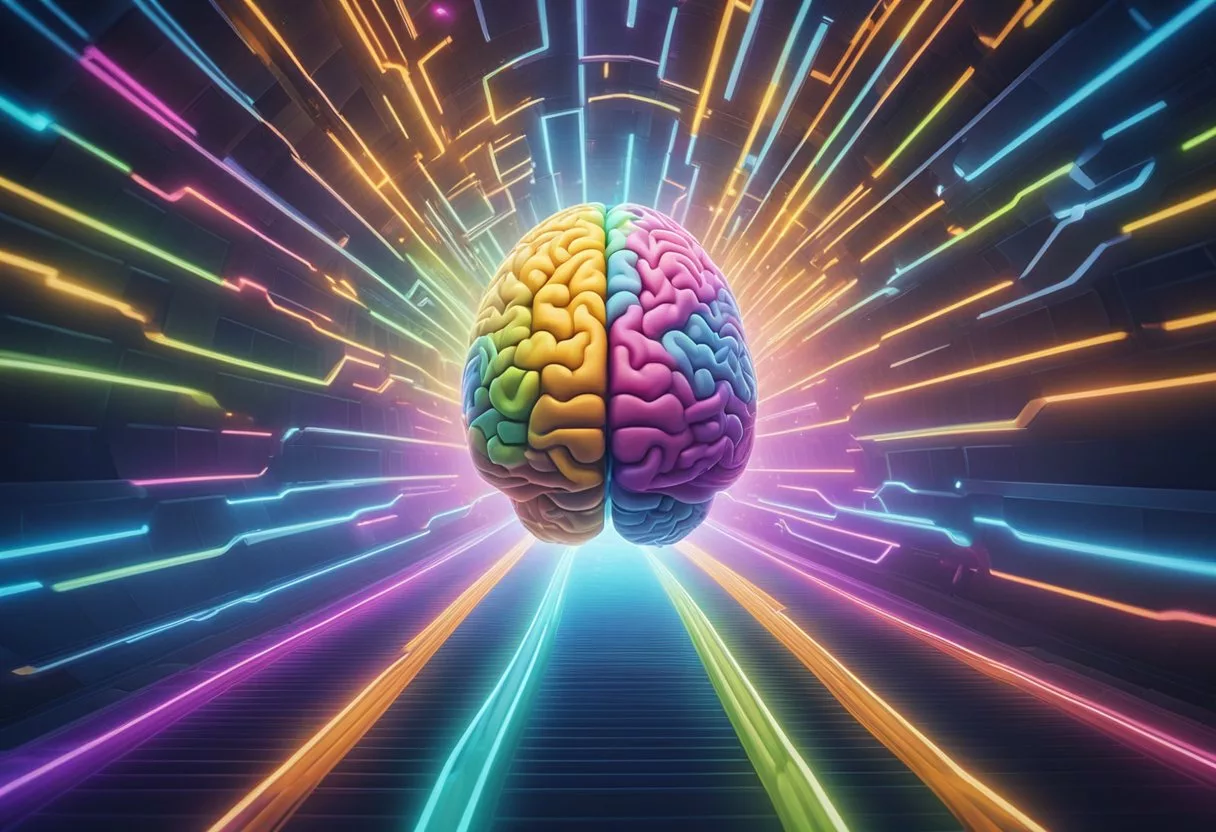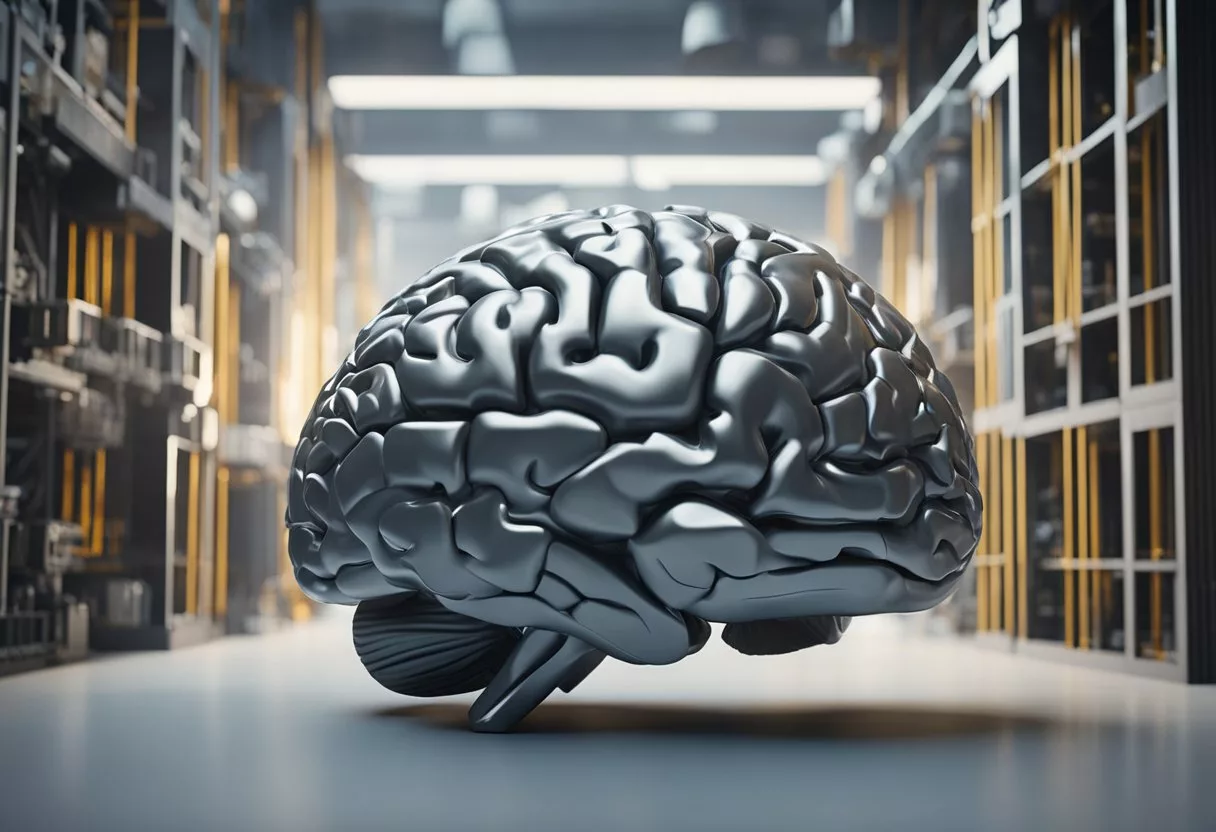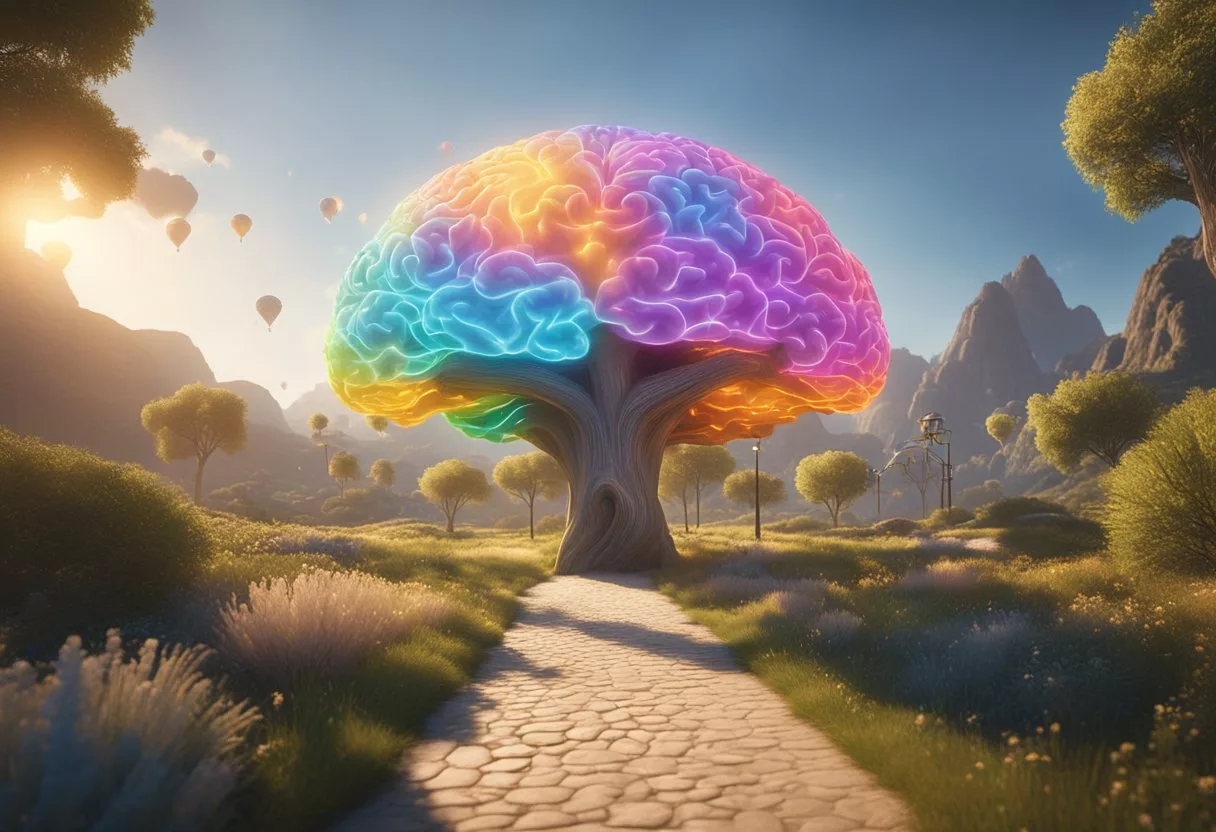The quest to understand the human brain and its intricate connection to emotions, particularly happiness, has been a focal point across various scientific fields.
Neuroscience has made significant strides in mapping the brain’s complex networks and functions that underpin our capacity for joy and contentment.
Happiness is not merely a fleeting emotion but a state that is intimately tied to the neurobiological processes within the brain.
Certain brain regions, neurotransmitters, and hormones contribute to the experience of happiness.
A deeper understanding of these mechanisms offers insights into how individuals can enhance their overall well-being.
While positive psychology extends this investigation into the realms of thought and behavior, exploring how certain cognitive activities and lifestyles can propagate states of lasting happiness.
It suggests that happiness is a dynamic pursuit, influenced by a multitude of factors that range from personal attitudes and values to social interactions and life achievements.
However, the pathway to happiness is not always straightforward; individuals may face various challenges that impede their ability to experience joy.
It is through the acknowledgment of these challenges and the resilience to overcome them that happiness can become a more integral part of daily life, evolving through different life stages.
Key Takeaways
- Identifying brain areas responsible for emotion can guide personal practices that enhance well-being.
- Cognitive strategies and lifestyle choices play a significant role in sustaining happiness.
- Recognizing and navigating life’s obstacles is crucial to maintaining happiness over time.
Understanding the Human Brain

The exploration of the human brain reveals intricate networks and chemical messengers critical to our sense of happiness. Dissecting these layers uncovers the sophisticated balance between biology and emotion.
Neurobiology of Happiness
The neurobiology of happiness is rooted in a complex interplay of various brain regions and the neurochemicals they produce.
Central to this discussion is the limbic system, which includes the insula and cingulate cortex, responsible for emotional processing.
Structures like the nucleus accumbens and the orbitofrontal cortex are particularly influential, orchestrating responses to rewarding stimuli.
The ventral pallidum and the ventral tegmental area also play pivotal roles in the experience of pleasure.
Neurotransmitters and Pleasure
Dopamine stands out among neurotransmitters as a chemical messenger intrinsically linked to the brain’s pleasure and reward system.
It is released by the ventral tegmental area, creating a sense of enjoyment and reinforcement to pursue certain behaviors.
Other neurotransmitters, such as serotonin and norepinephrine, contribute to the modulation of mood and memory.
They interweave with dopamine to form a network that enables the perception of happiness.
Anatomy of Well-Being
Autonomy and the ability to make choices can significantly impact a person’s well-being.
The subcortical structures of the brain, which include the nucleus accumbens and ventral pallidum, are instrumental in decision-making processes.
Meanwhile, the orbitofrontal cortex is associated with evaluating choices and outcomes, influencing how we perceive the quality of our decisions and their impact on our happiness.
Additionally, the cingulate cortex contributes to emotional oversight and resolving internal conflicts, which are vital to achieving a state of contentment.
Psychological Perspectives

This section explores the unique ways that psychology approaches the quest for happiness, including the study of positive emotions and well-being from both theoretical and practical viewpoints.
Positive Psychology
Positive psychology focuses on enhancing human well-being and happiness.
It emphasizes the role of positive emotions and traits that contribute to a fulfilling life.
Key components in this field involve studying subjective well-being, understanding the motivation behind human actions, and fostering positive affect to improve overall life satisfaction.
Theories of Happiness
Several theories have been proposed to explain happiness.
The hedonic viewpoint suggests that increasing positive experiences and reducing negative ones lead to happiness.
In contrast, the eudaimonic perspective sees happiness as more than pleasure, emphasizing meaning and self-actualization.
Happiness is also considered from a reward system standpoint, where the anticipation of pleasure (wanting) can be as important as the satisfaction or contentment (liking) derived from a reward.
Emotional Well-Being
Emotional well-being is a state where individuals experience more positive emotions than negative ones.
It involves a balance between positive and negative affect, creating a sense of emotional stability.
Culture plays a significant role in shaping emotional experiences and can influence individual consciousness and expressions of well-being.
Lifestyle and Cognitive Activities

Adopting specific lifestyle habits and engaging in various cognitive activities can influence the brain’s capacity for happiness.
Meditative Practices
Meditative practices are vital for cultivating mindfulness and improving overall wellbeing.
They involve focusing attention and can lead to increased access to a state of tranquility.
Regular practice of meditation can enhance one’s ability to remain present and can help regulate emotional responses.
For instance, mindfulness meditation involves observing thoughts and feelings without judgment, while concentration meditation requires focusing on a single point.
Examples of Meditative Practices:
- Mindfulness-Based Stress Reduction (MBSR)
- Mindfulness-Based Cognitive Therapy (MBCT)
- Breathing exercises
- Progressive muscle relaxation
Continual Learning and Adaptation
The brain thrives on stimulation and novel experiences, which continual learning provides.
Engaging in cognitive exercises and seeking new knowledge promotes mental flexibility and adaptation.
This ongoing development can be associated with a sense of achievement and happiness.
Learning new skills, languages, or even engaging in problem-solving activities can contribute to a more active and enriched mind.
Benefits of Continual Learning:
- Cognitive resilience: adapting to new situations and challenges.
- Mental sharpness: engaging in learning keeps the brain active.
Interpersonal Connection and Empathy
Interpersonal connections foster empathy and a sense of belonging, which are crucial for happiness.
Compassionate interactions can lead to a cascade of positive emotions and a feeling of connectedness.
Practicing empathy involves active listening and putting oneself in another’s shoes, which can build deeper relationships and a supportive community.
Pathways to Achieving Lasting Happiness

In exploring the labyrinth of the human mind, research identifies key aspects that contribute to lasting happiness.
The intricate interplay between our biology, cognitive processing, and cultural environment sets the foundation for achieving a sustained sense of well-being.
Neurobiological Dynamics
Neurobiological dynamics are pivotal in the quest for enduring happiness.
Neurophysiological activation in certain brain regions corresponds with positive mood states.
For instance, the release of neurotransmitters such as dopamine plays a significant role in the sensation of pleasure and motivation, which are integral components of happiness.
The ABC model of happiness examines these neurotransmitter pathways, providing a neurobiological perspective on how persistent happiness can be achieved.
Cognitive Constructs and Mood Regulation
From the lens of a cognitive construct, the brain’s ability to shape thoughts, beliefs, and attitudes lays a foundation for regulating mood.
Cognitive constructs act as filters through which individuals view their experiences, affecting their emotional states.
Concepts like the search for autonomy and reproduction of positive thought patterns through techniques such as mindfulness and self-reflection highlight the brain’s capacity for meta-cognition—thinking about thinking.
Books like “Super Brain” detail the process of creating new pathways for cognitive growth and emotional regulation.
Sociocultural Influences
Finally, the culture one is embedded in has a profound influence on their happiness.
Sociocultural dynamics can reinforce or deter the neurobiological dynamics and cognitive efforts made by an individual seeking happiness.
For example, a culture that values community and social bonds may enhance an individual’s experience of joy and belonging.
Conversely, societal pressures and negative cultural norms can impede happiness.
Understanding these external factors is critical, as reflected in explorations of deeper meaning and fulfillment in works such as “Lasting Happiness: In search of deeper meaning and fulfilment.”
Challenges to Happiness

Achieving happiness is often hindered by a range of biological and psychological factors that impact brain function and behavior.
From the complexities of stress to the nuances of mental health, these challenges illustrate the delicate balance required for sustaining well-being.
Stress and Coping Mechanisms
Stress is a significant barrier to happiness. It manifests when individuals perceive a discrepancy between the demands placed upon them and their ability to meet those demands.
Chronic stress can lead to depression, diminish motivation, and impede behavior control, influencing one’s overall ability to find happiness.
Coping mechanisms vary, with some individuals finding relief through positive reinforcement and trainability. For example, they adopt relaxation techniques or engage in regular exercise.
The Spectrum of Mental Health
Mental health conditions, particularly depression, play a critical role in shaping the path to happiness.
Depression is more than a transient feeling of sadness; it involves a prolonged period of low mood and aversion to activity, affecting one’s thoughts, behavior, motivation, and sense of well-being.
The biological implications are vast, including changes in brain chemistry and function, which can affect daily living and satisfaction.
Addressing mental health is crucial for overcoming the challenges to happiness, often requiring professional help and sometimes medication.
Substance Use and Addiction
Addiction, which encompasses substance use and behavioral addictions, poses a formidable challenge to achieving happiness.
It often starts as a means of avoiding stress or seeking relief, but can quickly spiral into a compulsive cycle that is difficult to break due to the reinforcement mechanisms of the brain.
As individuals age, the vulnerability to addiction may increase, thereby influencing happiness.
Recovery focuses on understanding addictive behavior, controlling it, and exploring alternative avenues for reinforcement that promote healthier habits and behavior control.
The Journey of Happiness Through Life Stages

The pursuit of happiness is influenced by various psychological and biophysiological factors across different stages of life.
From the formative effects of childhood to the reflective satisfaction in later years, understanding how happiness evolves can illuminate the human experience.
Childhood and Adolescent Development
Childhood lays the foundational emotional and cognitive framework affecting one’s capacity for happiness later.
During these early years, the rapid maturation processes of the brain are crucial for developing the necessary autoregulation skills and coping mechanisms that contribute to subjective well-being.
Adolescence brings about significant biophysiological changes that can impact mood and behavior, setting the stage for future achievement and life satisfaction.
Adult Well-Being and the ‘U-Curve’
In adulthood, happiness often follows a pattern known as the ‘U-Curve’ of happiness.
Research suggests that adults typically experience a dip in happiness during middle age, followed by an increase as they grow older.
This could be due to a variety of factors, including career pressures, family responsibilities, and the search for a sense of achievement.
Happiness in the Elderly
As individuals enter into their elderly years, happiness levels are generally reported to be higher.
This stage of life is often associated with increased life satisfaction, possibly due to a shift in priorities, a greater sense of appreciation, and the ability to better handle life’s ups and downs through accumulated experiences.
Aging is also marked by changes in social roles and a deeper understanding of emotional complexity, contributing to a more stable sense of well-being.
Integrating Happiness Into Everyday Life

To cultivate a life abundant in happiness and well-being, one must conscientiously integrate practices that foster these qualities.
Below, we explore strategies that not only encourage a positive outlook but also contribute to a long-lasting sense of contentment, with considerations for both mental and physical health.
Practical Tips for Maintaining Positivity
- Daily Gratitude: Begin each day by reflecting on three specific things for which you’re grateful. This practice can shift one’s focus from deficits to appreciations, enhancing overall happiness.
- Mindfulness: Engage in regular mindfulness exercises, such as meditation, to train the brain to focus on the present moment. This increases consciousness of life’s pleasures and reduces stress.
Long-Term Satisfaction and Contentment
- Goal Setting: Establish realistic personal and professional goals. Achieving these can provide a sense of deep contentment and counter the satisfaction paradox, where constant desire leads to perpetual dissatisfaction.
- Relationship Nurturing: Invest time and genuine effort in relationships. Strong social connections are pivotal for emotional support and contribute to long-term well-being.
The Role of Diet and Physical Health
- Nutrition: Incorporate foods rich in tyrosine, such as cheese and milk, which can influence brain mechanisms tied to a sense of pleasure.
- Exercise: Regular physical activity can elevate heart rate and release endorphins, which are associated with inner joy and can lead to lasting peace.
Frequently Asked Questions

Understanding happiness and its pathways in the brain involves exploring complex neurochemical reactions and structures. The following questions address key aspects of the brain’s involvement in happiness.
What causes happiness within the brain’s chemistry and structure?
Happiness is a result of a symphony of neurochemical reactions within the brain.
Neurotransmitters like serotonin, dopamine, and oxytocin play pivotal roles, while the brain’s structure, including neural pathways and certain regions, facilitates the emotional response of happiness.
What is the neurological explanation for the sensation of happiness?
Neurologically, the sensation of happiness is facilitated by activity within the brain’s limbic system, particularly the release of dopamine, which is often referred to as the ‘feel-good’ neurotransmitter.
This neuronal activity signals reward and pleasure, resulting in the experience of happiness.
How can one rewire their brain to enhance feelings of happiness?
Rewiring the brain for enhanced happiness is possible through consistent practices like mindfulness, gratitude, and cognitive-behavioral strategies.
These practices can strengthen neural pathways associated with positive emotions.
What are the discernible differences between happiness and pleasure from a neuroscientific perspective?
From a neuroscientific view, happiness is generally associated with sustained and long-term neural processes, whereas pleasure is tied to more immediate and transient brain activity, often linked with the release of neurotransmitters like endorphins.
Which specific regions of the brain are associated with the experience of happiness?
The experience of happiness is associated with several brain regions, including the prefrontal cortex for processing rewarding experiences, the amygdala for emotion regulation, and the hippocampus for memory formation.
How do the processes of the brain lead to the manifestation of happiness?
Processes of the brain leading to happiness involve the integration of sensory input, emotion regulation, and cognitive appraisal. Neurotransmitter signaling paves the way for the emotional state we recognize as happiness.